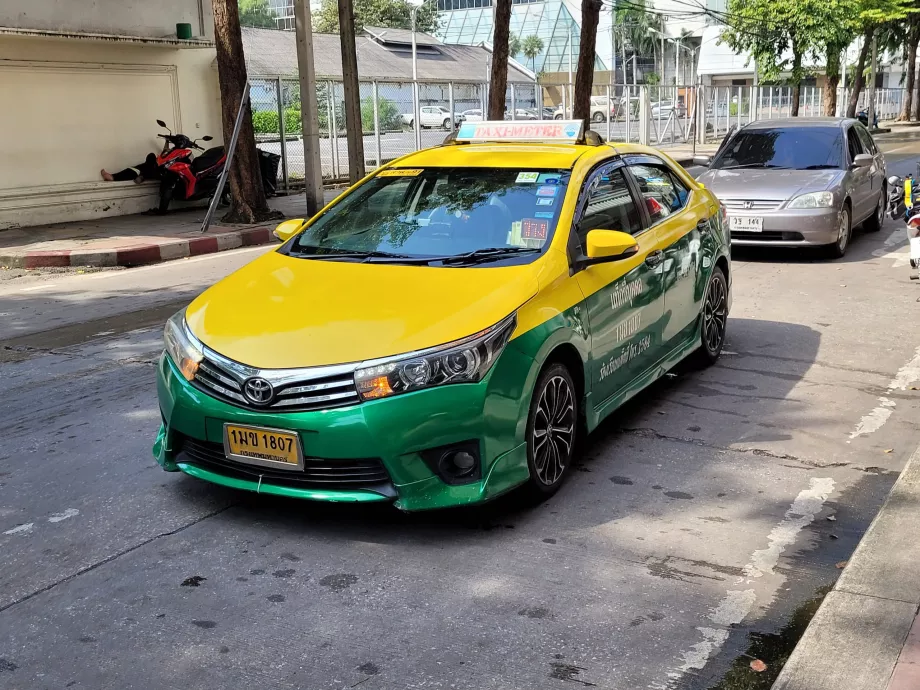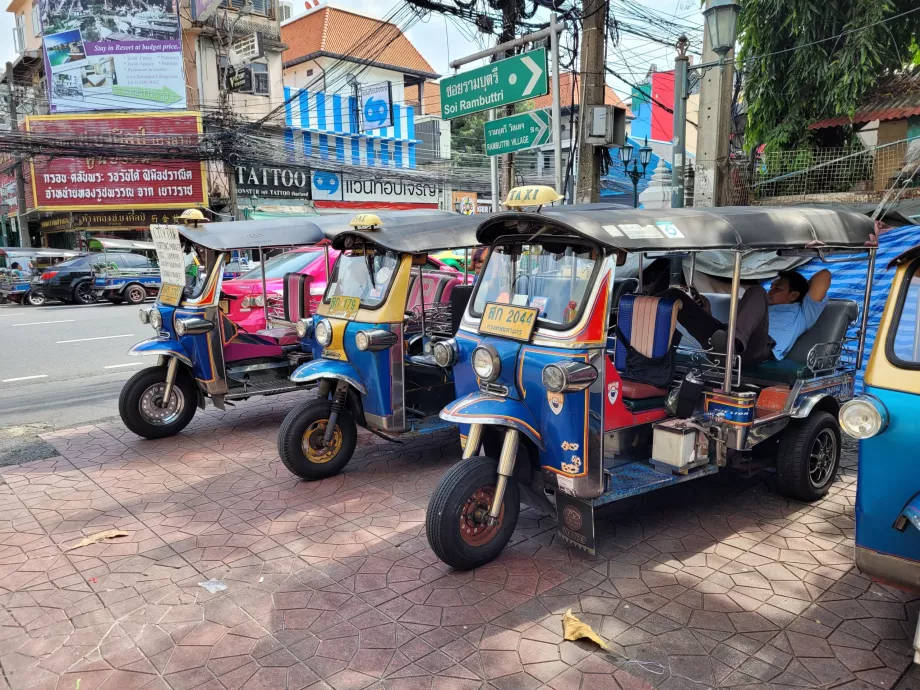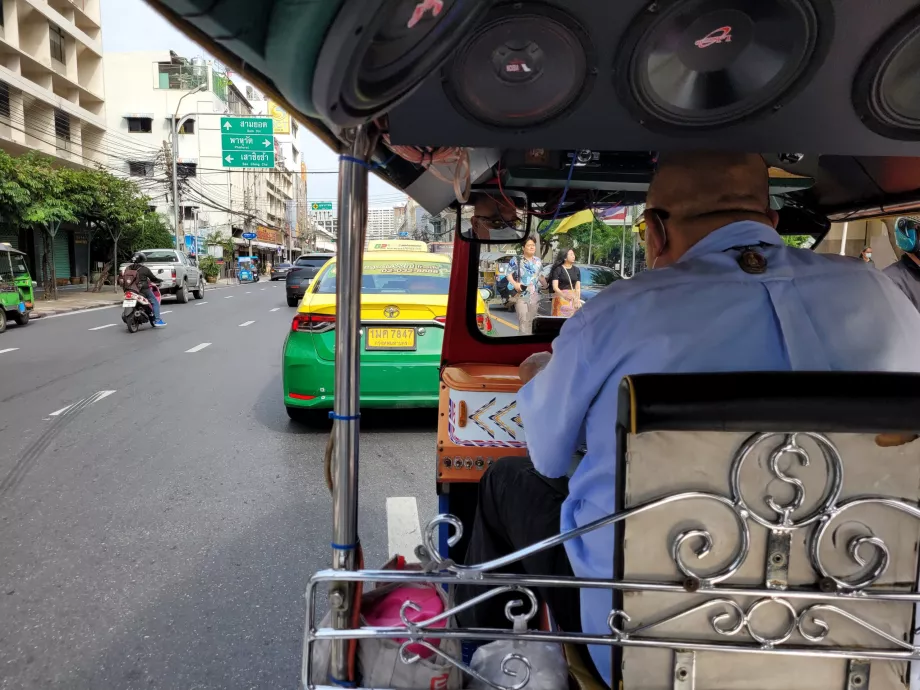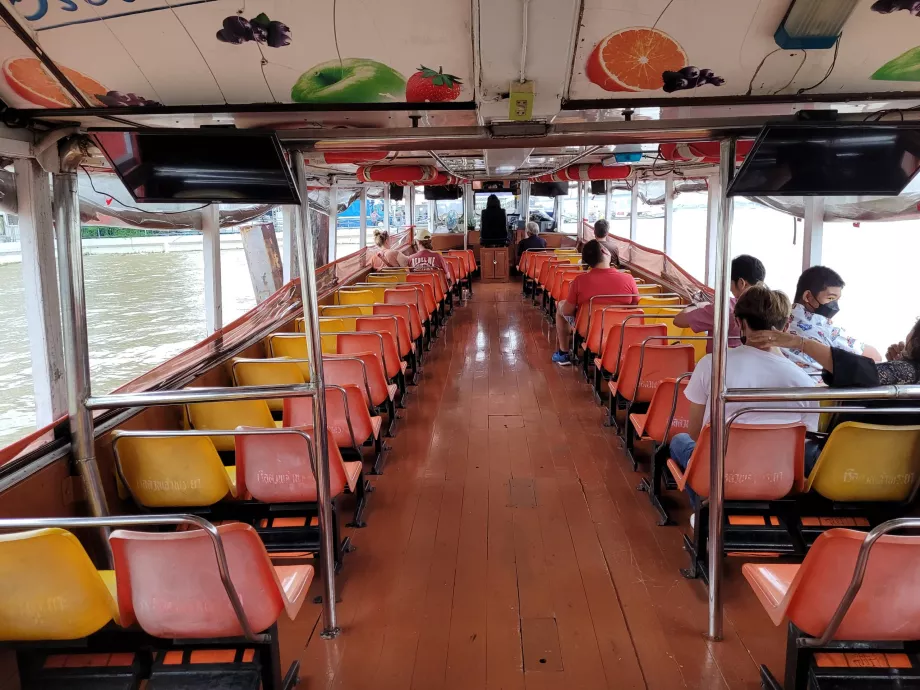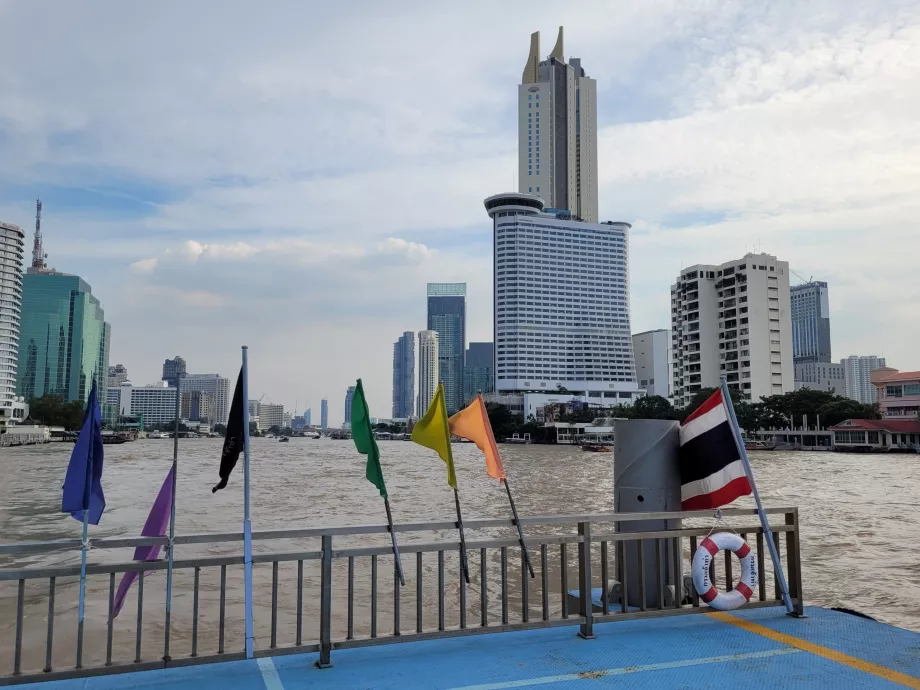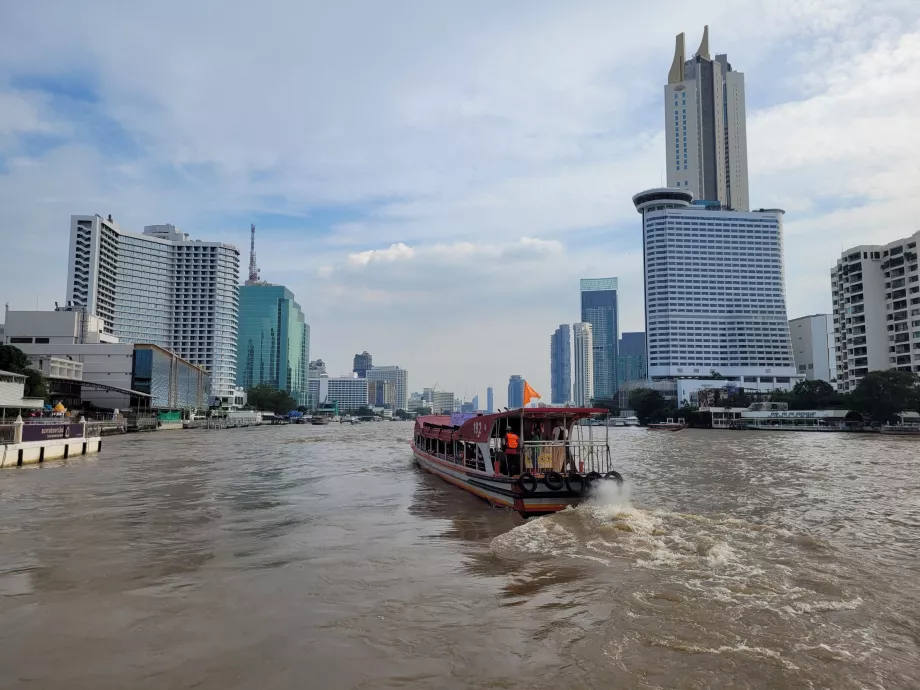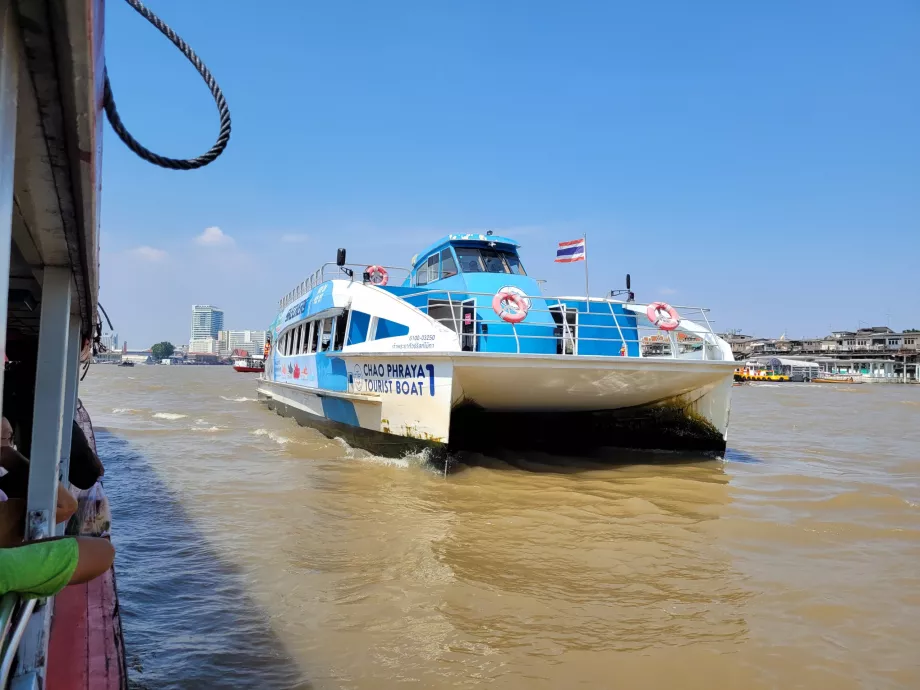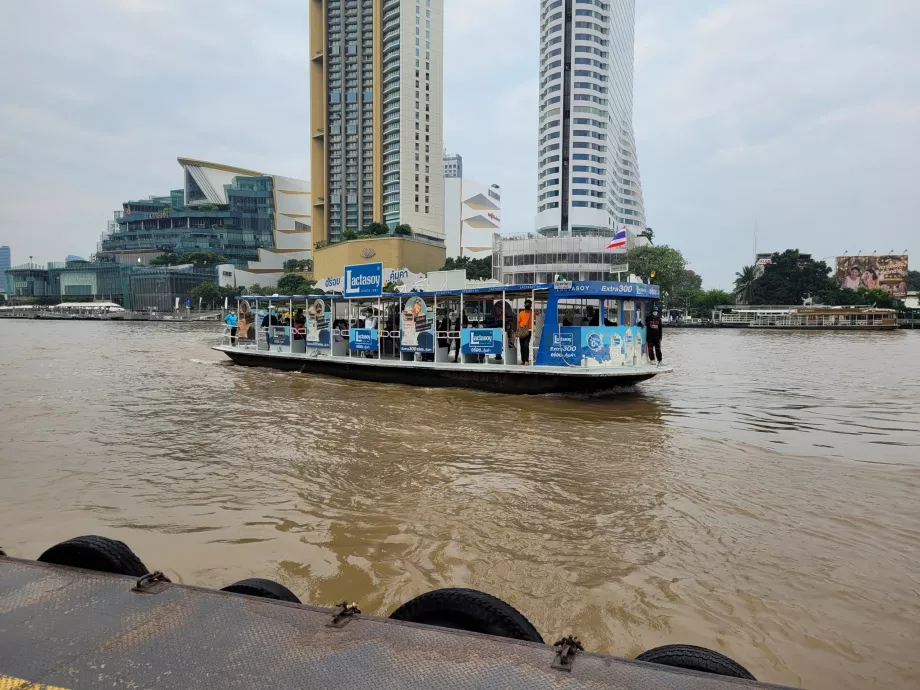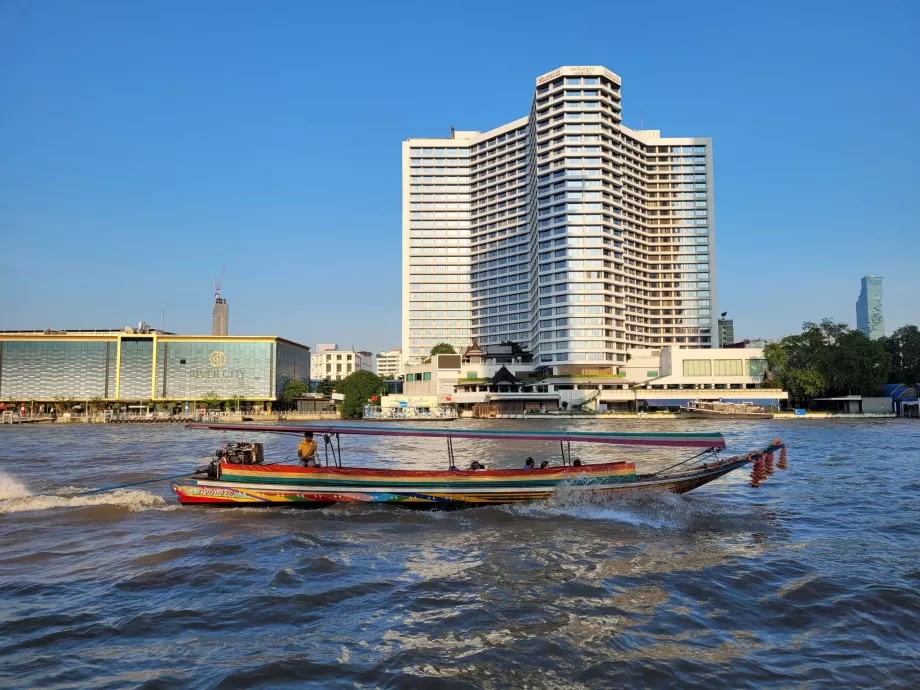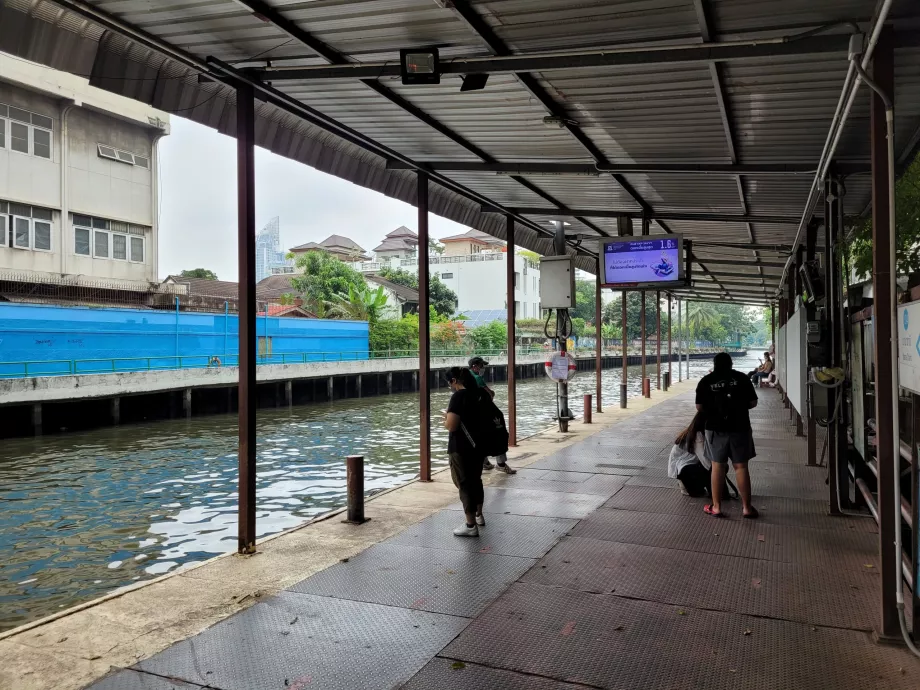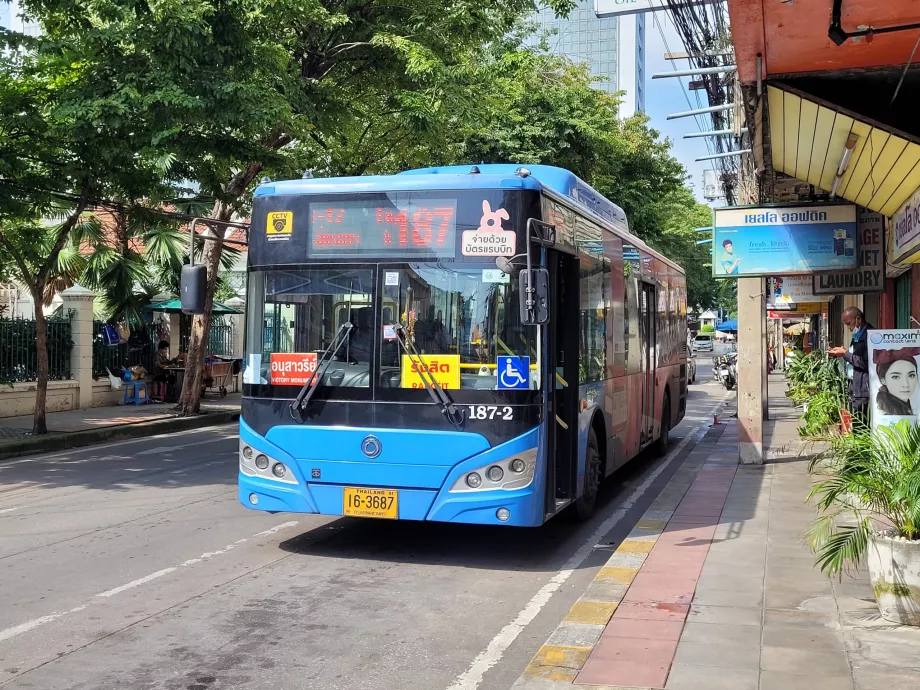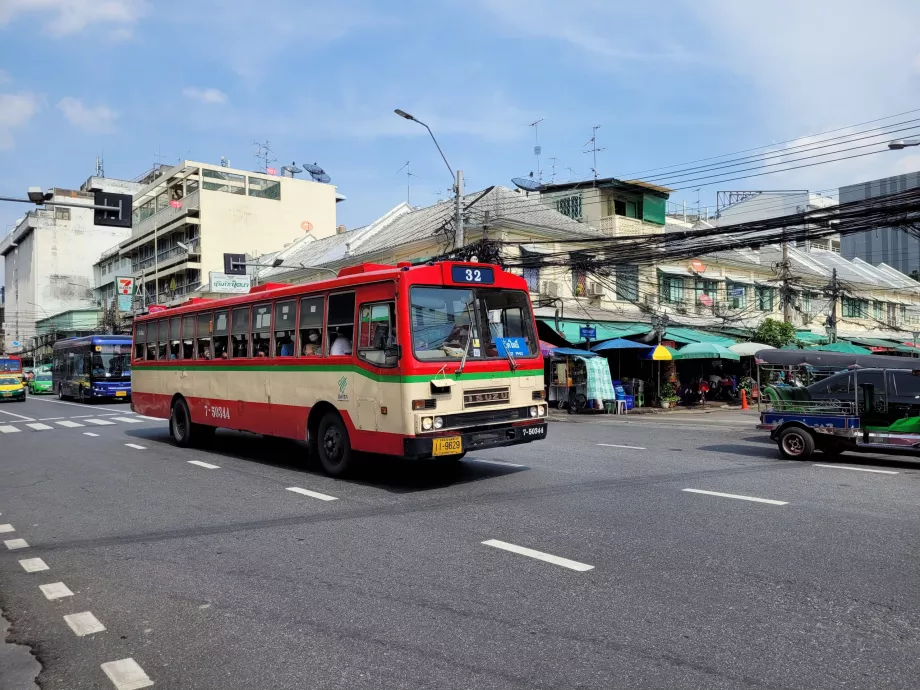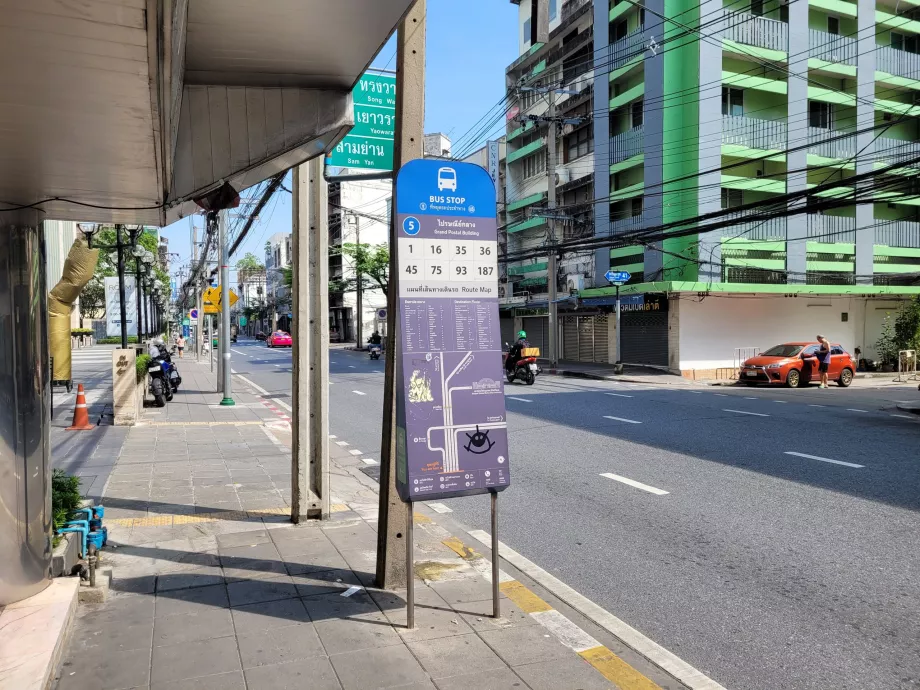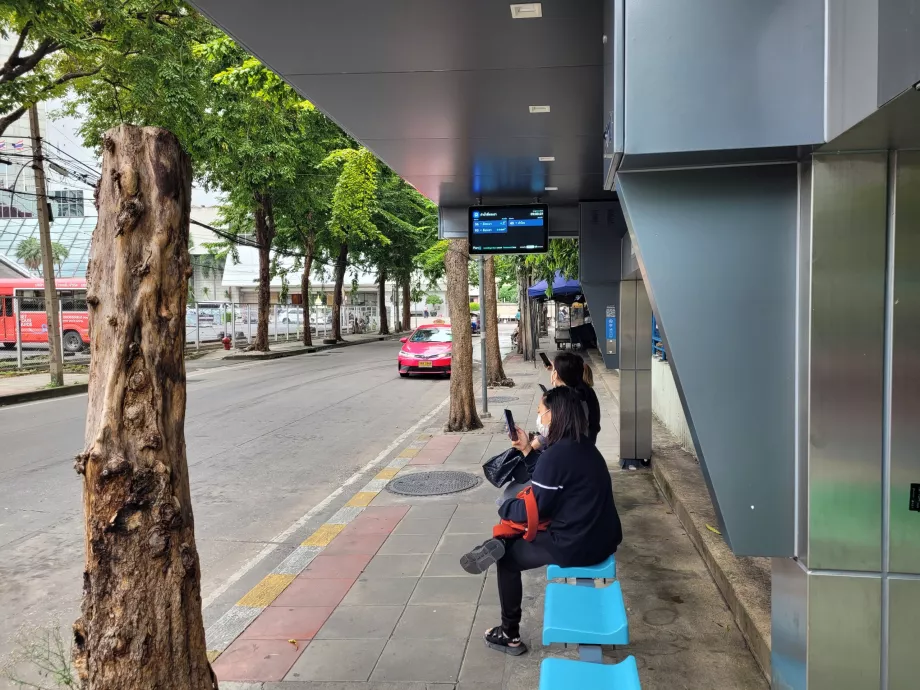Придвижване Банкок
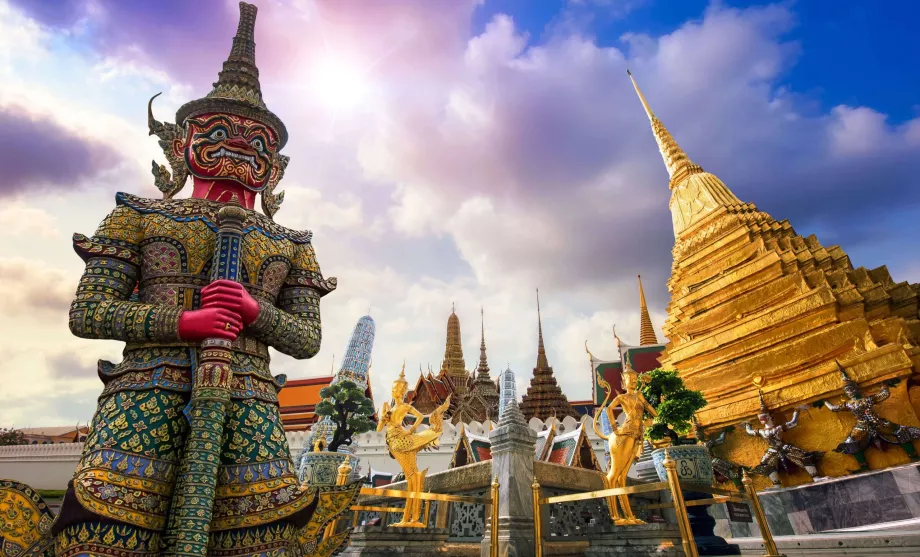
How to get around Bangkok is the most pressing question for most tourists before visiting the city. The distances are vast and the transport system very opaque at first glance. However, you'll soon find that where you can't get to by subway, the ubiquitous and very cheap taxis will solve everything.
Let's break down the different modes of transport in Bangkok in detail, what prices to expect and how to use them most efficiently.
In this chapter, we'll describe how to travel around the city. If you are looking for information on how to get to Bangkok by air from abroad, but by train or bus from other Thai destinations, read the chapter "How to get to Bangkok".
Bangkok Metro
The main public transport arteries in Bangkok are the metro lines. Even so, they probably won't be nearly enough for you, as Bangkok's metro is relatively new, still growing, and doesn't go to many important places at all. Moreover, the metro lines are (quite logically) mainly tailored to the needs of locals and not so much to the main tourist streams.
Moreover, the Bangkok metro is operated by 4 different companies, which do not recognize each other's tickets and you have to buy a new ticket every time you change between them.
Comprehensive information about travelling by urban rail is compiled for you in a separate chapter:
Bangkok Taxi
Using a taxi in Bangkok will probably not pass you by. It is definitely the most efficient and surprisingly cheap way of transport if you use official taxis with a meter.
These are either green-yellow, blue, red or pink and always have the label "Taxi Meter". You will come across taxis absolutely everywhere in Bangkok, both in very touristy places and on the very outskirts of cities and in the most backstreets. In fact, taxis are also widely used by locals. And if you don't see a taxi around at the moment, don't despair, there will be one within minutes.
Taxi prices in Bangkok
Taxis are, at least by Western standards, very cheap.
- Starting rate (whole 1st kilometer) - 35 thb
- Surcharge for travel to/from both airports - 50 thb
- 2nd to 12th km - 5 thb per kilometre
- 12th to 20th km - 5,50 thb per kilometre
- 20th to 40th km - 6 thb per kilometre
- Travel using the motorway - approx. 20 thb
However, congestion and standing in congestion are also taken into account. If the taxi is stationary or moving at a speed less than 6 km/h, the rate 1,60 thb per minute will start to be added. This makes it difficult to calculate the exact amount of the journey in advance.
Generally, you will rarely pay more than 100 baht for a taxi journey within the wider Bangkok city centre. The vast majority of journeys fit into the range 50 thb to 90 thb.
Is a taximeter always used?
If you flag down a moving taxi during the day, in the vast majority of cases the driver will immediately turn on the meter without saying anything.
The situation is different if you want to get into a standing taxi at tourist sights or at night at hotels (especially in the Sukhumvit area, Silom Road and Khaosan Road). Then taxi drivers usually try to negotiate their own price, which is usually 4-5 times the meter price. Refuse, get out and flag down a moving taxi. It may be that they will negotiate the price too, it's important to just hang on and wave to the next one.
There are so many taxis that you can always find a taxi driver who will take you according to the meter, even at night in exposed places.
Can I pay by card when I take a taxi?
No, taxi drivers in Bangkok only accept cash. Driving with card payment is only possible with the more expensive Grab mobile app.
Is it worth using the Grab or Bolt apps?
These mobile apps are extremely popular in Asia for hailing and paying for taxis, but they're not very worth using in Bangkok. In particular, Asia's number one "taxi app" Grab (Google Play / App Store) tends to be more expensive than a regular taxi in Bangkok in most cases.
It has the advantage of card payment options (Grab and Bolt, but in the case of Bolt you must not choose the "Taxi" option, where you can only pay in cash) and also in the early morning hours (between about 1:00 and 5:00), when there are fewer regular taxis and you can wait 15-20 minutes before one appears.
Do you tip when you ride?
Thais don't tip, so the driver won't be offended if you don't tip. On the other hand, of course, it is always a pleasure.
How to catch a taxi?
Simply wave at a passing taxi, you usually won't be waiting more than 10 minutes. And in exposed areas, you won't wait at all. Perhaps if you'll be travelling from your hotel very early in the morning, it may be worth hailing a taxi in advance via the more expensive Grab or Bolt apps.
Are taxis safe in Bangkok?
Yes. Travelling by taxi is very safe. The cars are modern, always equipped with air conditioning, and taxi drivers in Bangkok don't cheat with their meters. And if they do try to cheat you, you'll know it firsthand before it happens by the driver offering you a ride without a meter.
How do I tell the taxi driver my destination?
Most taxi drivers in Bangkok don't speak much English, but they know the names of the biggest hotels and where they are. Even so, it's definitely better to have a map of your destination ready and show it to the taxi driver beforehand.
Tuk-tuks in Bangkok
A tuktuk, often spelled tuk-tuk, is a motorized tricycle with a canopy and a rear seat for two passengers. Tuk-tuks are extremely common in Bangkok and are not only used by tourists but also by locals.
A tuk-tuk ride is undoubtedly an experience where you soak up all the sounds, smells and stinks of the street. But that's where the benefits of travelling by tricycle end. Tuk-tuks are not equipped with taximeters and tuk-tuk drivers know that riding their vehicle is an experience for tourists, so they persistently try to inflate the price significantly.
So while locals will drive one particular route for, say, 30 baht, you'll drive the same route for 100. If you don't accept the rate the tuk-tuk operator likes, he'll often turn you down rather than lower the price. He knows he'll pick up another tourist around the corner who will pay more.
So we recommend travelling by tuk-tuk once for the experience, knowing that the price has to be negotiated and that it will probably still be higher than a much more comfortable taxi ride.
Boats on the Chao Phraya River and canals
Bangkok is a city built on water, so boating is a natural part of public transport. The bulk of the water transport takes place on the Chao Phraya River, which winds through the historic part of Bangkok, but regular boat services also ply several side canals.
Choose a hotel with river views
Chao Phraya Express Boat
The backbone of the public transport boat network is catered for by several Chao Phraya Express Boat lines, which serve both tourists and locals. Prices are more than folksy and if you're travelling to places along the river, a boat ride is not only a great experience but also the fastest transport option. Unless it's a weekend or time over midday, when schedules are significantly thinner and you can wait up to 40 minutes for a boat.
There are three boat lines in operation, only one of which runs all day and on weekends, the other two are only booster services at peak weekday times.
The lines are marked by the colours of the flags on the stern. The colours of the flags of the respective lines are also always displayed on the pier where the line stops.
- Orange - operates weekdays from 06:00 to 18:30, Saturdays from 06:00 to 18:00 and Sundays from 08:00 to 18:00. The interval between 06:00 and 08:50 is between 15 and 20 minutes, in the afternoon between 20 and 30 minutes and between 09:00 and about 15:00 the interval is 40 minutes. On Saturdays and Sundays the boats run every 20 to 40 minutes
- Yellow - runs only on weekdays at intervals of 20 minutes between 6:00 and 8:00 in the southbound direction only and at intervals of 30 minutes between 17:00 and 19:00 in the northbound direction only
- Yellow-Green - runs only on weekdays at intervals of 30 minutes between 6:00 and 8:00 in the southbound direction only and at intervals of 30 minutes between 16:00 and 17:45 in the northbound direction only
- Red - runs only on weekdays at 30-minute intervals from 6:00 to 7:30 a.m. in the southbound direction only and at 30-minute intervals between 4:00 and 5:30 p.m. in the northbound direction only
Exact departure times are posted at the termini only. However, the online position of the ships can be monitored via the Viabus app (Google Play / App Store). However, it is always necessary to find the relevant stop on the map, click on it and select the one you want from the selection of lines.
The ticket price is flat and set differently for each line. It doesn't matter whether you take just one stop or the whole route - you always pay the same. There are only single ride tickets, which you buy from the conductor directly on the ship. You can only pay in cash. Always keep your paper ticket for the entire ride, there are often ticket inspectors!
- 16 thb - Orange Line
- 21 thb - Yellow and yellow-green lines (for the yellow-green line you pay 33 thb, if you travel all the way from Pakkret, but there is nothing of tourist interest)
- 30 thb - red line
The boats are quite fast and are often so full that you have to travel "standing up". However, boat transport in Bangkok is safe and accidents are rare.
Official (though not always up-to-date) information: chaophrayaexpressboat.com
MINE Smart Ferry
MINE Smart Ferry also operates regular services with all-electric boats on three routes.
- Metro Line - From 6:00 am to 5:45 pm once every hour, on weekends from 7:30 am to 8:45 pm once every 40 minutes
- City Line - from 7:00 to 18:00 once every 30 minutes throughout the week
- Urban Line - a shuttle service that runs in the morning only in the southbound direction (about once every 30 minutes) and in the afternoon at the same interval only in the northbound direction
Tickets are sold on board by the conductor for 20 thb and can also be paid by card.
Official information: www.minesmartferry.com
Chao Phraya Tourist Boat
The larger and more modern blue flag boats are mainly for tourists, but due to their relatively low price, these services are also used by locals.
The boats sail once every half hour every day (even weekends). The first boat leaves Sathorn at 8:30 am and the last one at 5:00 pm. From the second terminal Phra Arthit, the first boat leaves at 9:00 am, while the last one leaves at 5:30 pm.
Tickets can be purchased from the dock attendants before boarding the boat for 30 thb, a day ticket is also available for 150 thb valid for any Chao Phraya Tourist Boat service for that calendar day. You can also pay by card at the dock attendant.
Official information, timetables and map: chaophrayatouristboat.com
Ferries
In many places across Bangkok, short ferries run across the Chao Phraya River from just one bank to the opposite bank. The vast majority of them cost 5 thb per trip and are usually paid for at the dock before boarding the boat, but sometimes only to the boat attendants.
These ferries usually run from 6:00 am to 9:00 pm, some until 11:00 pm, about once every 5 to 15 minutes.
The upmarket large shopping centre Iconsiam, like many riverside hotels, then runs its own ferries free of charge, see the full ferry map below.
Long-tail Boat cruise
The river is also plied by a huge number of small fast long-tail boats. You'll see these everywhere at all hours of the day. These are tourist boats that will take you around the river for a fee of around 1 500 thb to 2 000 thb for 2 to 4 people per hour.
These cruises can be arranged either at the major wharves or at the tourist agency booths in the center.
Boat transport on the side canals
Experience Bangkok from yet another perspective and also take a boat cruise on the narrow canals cutting through the city's buildings.
Two boat lines operate within the city centre.
- Khlong Saen Saep Canal with an overlap to Khlong Maha Nak Canal
- Khlong Phadung Krung Pasem Canal
Both lines are attractive to tourists.
The first one can be used to travel from the temple to the Golden Mountain Siam Square, Pratunam and northern Sukhumvit area and then 18 km to the eastern suburbs of Bangkok.
This line is actually split into two: the first pendulates between Golden Mountain and Pratunam wharf, while the second goes further east. The boats run every day from about 5:30am to 8:30pm, and only until 7pm on weekends. On weekdays the interval is between 10 and 15 minutes, and on weekends between 20 and 30 minutes. The price of the ticket is determined by the number of stations travelled and varies between 10 thb and 25 thb. It is always paid to the operator on board.
The second line pendulates between the former Hua Lamphong station and Thewes wharf, where you can transfer to the Chao Phraya Express Boat. You will pass several temples along the way. Fully electric boats run daily from 6am to 7pm (8am on weekends). Morning and afternoon with an interval of 15 minutes, 30 minutes during the day.
Currently the electric line from the main station to Thewes Pier does not run and we have not been able to verify the fare or the reason why it does not run.
Public transport buses
Buses are the cheapest form of transport in Bangkok, unfortunately also the least transparent. Partly because individual routes are operated by several different carriers, there are no bus maps, no precisely written timetables and certainly no uniform ticket prices.
Bangkok's buses fall into two basic categories:
- Air-conditioned (A/C) - modern, more comfortable and more expensive.
- Non-air-conditioned - old with fully opening windows and very cheap.
While not much slower than a taxi, bus travel is considerably less comfortable. Non-air-conditioned buses have hard benches, while air-conditioned buses tend to be more crowded.
How to know the right line?
All buses are clearly marked with the line number and destination station. However, the older non-air-conditioned ones in particular often only have signs in Thai. Since there are no maps and the information on Google maps is not always up to date, just figuring out what line you have is difficult enough.
The stops are always marked with the name and numbers of the lines that stop there. Most of them also feature a symbolic diagram of where the lines in question go in the immediate area, which is quite a relief. Some of the larger stops also display the exact time of arrival of the line on electronic indicators.
The most useful tool for bus travel is the Viabus mobile app (Google Play / App Store), which logically requires internet data. It shows all the stops (bus, boat and metro). If you click on the nearest bus stop to your location, a list of the lines that stop there is displayed. Then just click on the number of the line and the map will show you its complete route. In addition, the current location of all buses is displayed, so you can easily check how long it will take to arrive.
How much do tickets cost where to buy them?
Tickets are always bought inside the bus from the conductor. Get on and wait for the conductor to come to you. On older non-air-conditioned buses, the price is flat no matter where you go. It varies from company to company, but generally you'll pay between 8 thb and 12 thb.
On more modern air-conditioned buses, the price is usually based on the number of stops you make. Again, wait for the conductor and tell him where you are going. Prices range between 15 thb and 25 thb.
There are no day or time tickets and you cannot buy a ticket anywhere other than from the conductor.
How often do the buses run?
Intervals vary between 5 and 20 minutes depending on the specific route and traffic situation. Travelling by bus is definitely not an option if you are in a hurry. Most services leave for the route around 5:30am and finish between 10pm and 11pm, with a few lines running all night.
Остават някакви въпроси?
Ако имате въпроси или коментари относно статията...

